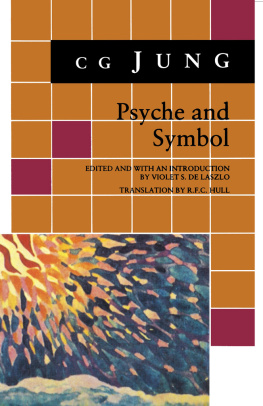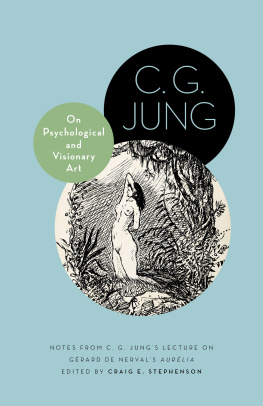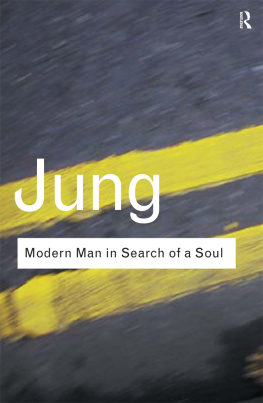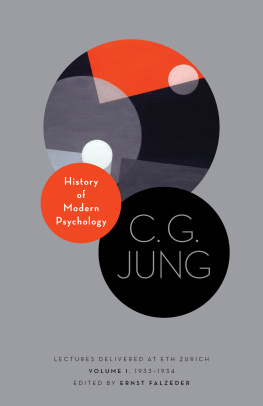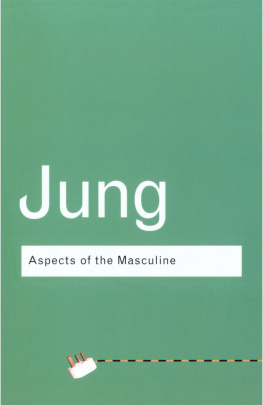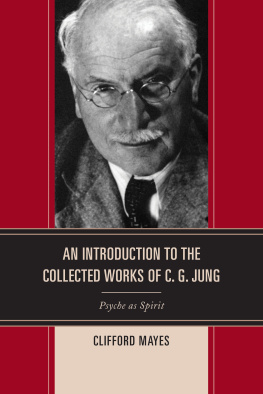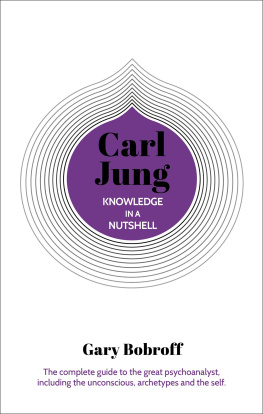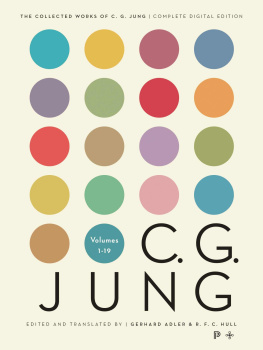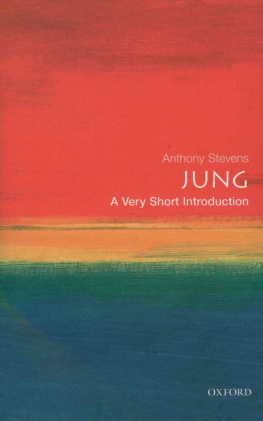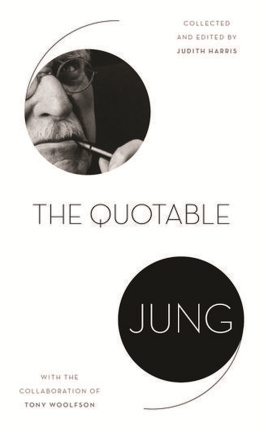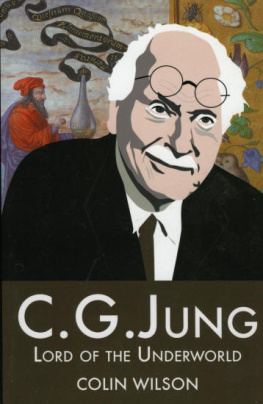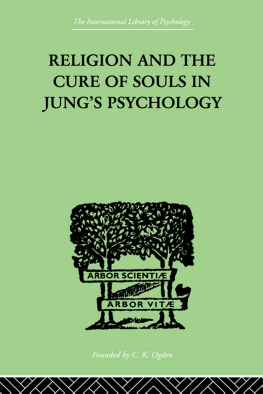PSYCHE
AND
SYMBOL
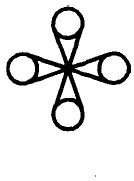
from
The Collected Works of C. G. Jung
VOLUMES 8, 9, 11,13, 18
BOLLINGEN SERIES XX
PSYCHE
AND
SYMBOL
A Selection from the Writings of
C. G. JUNG
TRANSLATED BY R.F.C. HULL
Selected and Introduced by Violet S. de Laszlo
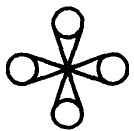
BOLLINGEN SERIES
PRINCETON UNIVERSITY PRESS
PUBLISHED BY PRINCETON UNIVERSITY PRESS
PRINCETON, NEW JERSEY 08540
Psyche and Symbol was first published by Doubleday, Inc., in 1958, in an edition copyright 1958 by Bollingen Foundation, Inc. (later assigned to Princeton University Press). The present edition consists entirely of texts from the Bollingen Series translations by R. F. C. Hull. The introduction by Violet S. de Laszlo is reprinted by arrangement with the editors estate. The Preface, dated August 1957, is the revised version appearing in The Symbolic Life, Volume 18, pp. 537-542, and is copyright 1958 by Bollingen Foundation, Inc. The five chapters from Aion: Contributions to the Symbolism of the Self, are from Volume 9, Part II, 2nd ed., pp. 371, copyright 1968 by Princeton University Press. The Phenomenology of the Spirit in Fairy Tales is from The Archetypes and the Collective Unconscious, Volume 9, Part I, 2nd ed., pp. 207254, copyright 1968 by Princeton University Press. Transformation Symbolism in the Mass is from Psychology and Religion: East and West, Volume 11, 2nd ed., pp. 203-296, copyright 1969 by Princeton University Press; Foreword to the I Ching" is copyright 1950 Bollingen Foundation, and appears in the same volume, pp. 589608. Psychological Commentary on The Tibetan Book of the Dead" is also from Volume 11, pp. 509526. The two chapters from Synchronicity: An Acausal Connecting Principle were originally published in The Interpretation of Nature and the Psyche, copyright 1955 by Bollingen Foundation; the present text is from The Structure and Dynamics of the Psyche, Volume 8, 2nd ed., pp. 485519, copyright 1969 by Princeton University Press. Commentary on The Secret of the Golden Flower" is from Alchemical Studies, Volume 13, pp. 655, copyright 1967 by Bollingen Foundation. This edition, including the Editorial Note, is copyright 1991 by Princeton University Press; all rights reserved.
Library of Congress Cataloging-in-Publication data will be found on the last page of this volume
First Princeton/Bollingen Paperback printing, 1991
Princeton University Press books are printed on acid-free paper, and meet the guidelines for permanence and durability of the Committee on Production Guidelines for Book Longevity of the Council on Library Resources
10 9 8 7 6 5 4 3 2 1
ISBN: 978-0-691-01903-1
eISBN 978-0-691-22497-8
EDITORIAL NOTE
In the mid 1950s, the Bollingen Foundation was approached by two New York publishers, each offering the idea of an anthology of C. G. Jungs writings. General interest in Jungs work was growing, and no selection was then available which presented his entire thought, and particularly that of his later years. The Foundation enlisted a distinguished analytical psychologist and scholar of Jung, Dr. Violet de Laszlo, who undertook to organize two separate collections, each representing the Jungian corpus in a different way and of value to the general reader as well as the student. At the time, only a half dozen volumes of the Collected Works had been published, and Dr. de Laszlo drew translations from other sources or from R.F.C. Hulls translations in preparation. For the present edition, the text of the Collected Works has been substituted. Dr. de Laszlos introduction has been retained.
Psyche and Symbol was published in 1958, one of the earliest volumes in the pioneering Doubleday Anchor paperback series. The editors intention was to select writings which would illustrate in convincing fashion the objects of [Jungs] symbol research and the manner of his approach, as well as a synopsis of the conclusions to which he was led. Professor Jung, who followed Dr. de Laszlos projects with close interest, contributed a preface, written in August 1957. The Basic Writings of C. G.Jung was published in 1959 in the Modern Library (Random House). The editor aimed to present as fully as possible some of the most important areas of Jungs conception of the nature and functioning of the human psyche.
Violet Staub de Laszlo was born in Zurich in 1900 and completed her medical studies at the University of Zurich. She was a pupil of Jungs while beginning her practice in Switzerland, and during the 1930s she lived in London, playing a central role in the first organization of analytical psychologists in England. In 1940 she settled in the United States, practicing, teaching, and writing during a twenty-five year residence. Violet de Laszlo was recognized as one of the leading exponents of the Jungian school. In 1965 she returned to Zurich, continuing an active life until her death in 1988.
*
For the paperback edition, the paragraph numbers of the Collected Works have been retained to facilitate reference.
W. McG.
The Basic Writings of C.G. Jung is also published as a Bollingen/Princeton paperback.
PREFACE
by
C. G.Jung
1264 Dr. de Laszlo has risked shocking the American reader by including some of my most difficult essays in her selection from my writings. In sympathy with the reader I acknowledge how tempting if not unavoidable it is to fall into the trap of appearances as the eye wanders over the pages in a vain attempt to get at the gist of the matter in the shortest possible time. I know of so many who, opening one of my books and, stumbling upon a number of Latin quotations, shut it with a bang, because Latin suggests history and therefore death and unreality. I am afraid my works demand some patience and some thinking. I know: it is very hard on the reader who expects to be fed by informative headlines. It is not the conscientious scientists way to bluff the public with impressive rsums and bold assertions. He tries to explain, to produce the necessary evidence, and thus to create a basis for understanding. In my case, moreover, understanding is not concerned with generally known facts, but rather with those that are little known or even new. It was therefore incumbent upon me to make these facts known. In so far as such unexpected novelties demand equally unexpected means of explanation I found myself confronted with the task of explaining the very nature of my evidential material.
1265 The facts are experiences gained from a careful and painstaking analysis of certain psychic processes observed in the course of psychic treatment. As these facts could not be satisfactorily explained by themselves, it was necessary to look round for possible comparisons. When, for instance, one comes across a patient who produces symbolic mandalas in his dreams or his waking imagination and proceeds to explain these circular images in terms of certain sexual or other fantasies, this explanation carries no conviction, seeing that another patient develops wholly different motivations. Nor is it permissible to assume that a sexual fantasy is a more likely motivation than, for instance, a power drive, since we know from experience that the individuals disposition will of necessity lead him to give preference to the one or the other. Both patients, on the other hand, may have one fact in commona state of mental and moral confusion. We would surely do better to follow up this clue and try to discover whether the circular images are connected with such a state of mind. Our third case producing mandalas is perhaps a schizophrenic in such a disturbed state that he cannot even be asked for his accompanying fantasies. This patient is obviously completely dissolved in a chaotic condition. Our fourth case is a little boy of seven who has decorated the corner of the room where his bed stands with numerous mandalas without which he cannot go to sleep. He only feels safe when they are around him. His fantasy tells him that they protect him against nameless fears assailing him in the night. What is his confusion? His parents are contemplating divorce.

